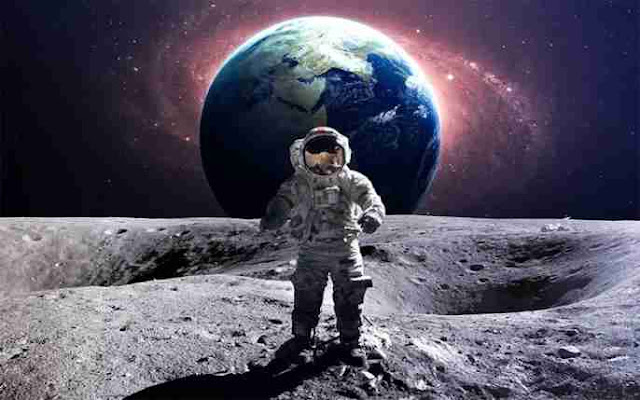How Do People Go To The Moon?
Have you ever looked up at the moon and wondered how humans managed to land on its surface? It may seem like an impossible feat, but it's a remarkable achievement that has captured our imaginations for decades. The journey to the moon requires intricate planning, advanced technology, and incredible bravery from those who embark on this groundbreaking mission.
 |
| How Do People Go To The Moon |
As we explore the topic of going to the moon, it's fascinating to consider how far we've come since humanity first gazed upon this celestial body in awe. Achieving such extraordinary feats is not just about scientific advancement ? it's also about overcoming obstacles and pushing boundaries. From the early days of space exploration to modern-day missions, each step taken towards reaching the moon represents a significant stride forward for human progress.
The story of how people go to the moon is one filled with determination, innovation, and courage. It's a tale that inspires us all to dream big and reach for the stars. So let's dive into this captivating subject together and discover what makes traveling beyond Earth's atmosphere such a monumental accomplishment!
The Launch Process
How did we get to the moon? The launch process is one of the most critical steps in achieving this monumental feat. It involves a series of complex procedures and technologies that work together seamlessly to propel astronauts into space.
First, the spacecraft is placed on top of a rocket, which serves as its primary source of propulsion. This rocket consists of several stages, each with its own engines that ignite sequentially during liftoff. As the rocket ascends higher into the atmosphere, it sheds these stages until it reaches orbit around Earth.
Once in orbit, the spacecraft undergoes further preparations before beginning its journey to the moon. Its trajectory must be carefully calculated to ensure that it arrives at just the right time and location for a successful landing. Astronauts also perform experiments and maintenance tasks while en route.
The launch process represents an incredible achievement in human engineering and innovation. It demonstrates our ability to overcome seemingly insurmountable challenges through determination and collaboration. However, it is only one step in a long and arduous journey towards exploring new frontiers beyond our planet's boundaries - next up: let's explore how we successfully landed on the lunar surface!
The Lunar Landing
As Neil Armstrong famously proclaimed, "One small step for man, one giant leap for mankind." The lunar landing was undoubtedly a monumental achievement that marked the pinnacle of human ingenuity and determination. But how did we get there?
The journey to the moon began with the launch process which involved rocket engines powerful enough to break through Earth's gravitational pull. Once in space, astronauts had to navigate their way toward the moon using advanced technology and calculations.
Upon reaching their destination, the real challenge began - safely landing on unfamiliar terrain. This required precise maneuvering and control over every aspect of the spacecraft. After the touchdown, astronauts then conducted experiments and collected samples while wearing specialized suits designed to protect them from extreme conditions.
But as awe-inspiring as it was to land on the moon, it was only half of the mission. The next hurdle was returning back to Earth unscathed. The spacecraft needed enough fuel and power to propel itself out of orbit and make its way back home at just the right trajectory angle. It was a momentous accomplishment when Apollo 11 successfully splashed down into the Pacific Ocean on July 24th, 1969.
Now that we've explored how humans went about landing on the moon let us delve into what exactly transpired during our return journey back to Earth.
Returning To Earth
After successfully landing on the moon, returning to Earth was another daunting task that required intricate planning and execution. The return journey involved several stages, each with its own set of challenges.
Firstly, the lunar module had to dock with the command module in orbit around the moon. This could not be done manually, so it relied entirely on automation and precise calculations. Once both modules were securely attached, the astronauts transferred from the lunar module back to the command module.
Next came the crucial step of leaving the moon's gravitational pull and starting their journey back to Earth. This required a carefully calculated burn of their engines at just the right time and angle. Any miscalculation could cause them to miss their trajectory or end up stranded in space.
Finally, as they approached Earth's atmosphere, they had to withstand the intense heat generated by reentry. The friction caused by air molecules colliding with the spacecraft can raise temperatures up to 2,500 degrees Celsius! A heat shield made of special materials such as ceramic tiles protected them during this critical phase before finally parachuting down safely into the ocean.
In summary, returning from a successful mission to land on the moon required careful planning and precision every step of the way. From docking two spacecraft together in orbit around the moon to ensuring safe entry through Earth's atmosphere, every detail was meticulously planned and executed flawlessly by NASA's team of experts.
Conclusion
So, that's how people go to the moon - a journey that is nothing short of awe-inspiring. The launch process alone takes courage and determination as astronauts are propelled into space on top of explosive rockets. It's like riding a lightning bolt toward an unknown destination.
The lunar landing requires precision and skill as the spacecraft descends onto the rocky surface. It's like threading a needle in the dark while hurtling through space at breakneck speed. But when they finally touch down, it must feel like standing in another world entirely.
Returning to Earth is perhaps the most nerve-wracking part of the journey as astronauts face intense heat and pressure during re-entry. It's like being baked in an oven while strapped to a rocket ship hurtling towards a planet with uncertain outcomes. Yet somehow, against all odds, these brave individuals make it back home safely, inspiring us all with their daring feats.
In conclusion, going to the moon is not just about science or technology; it's also about human curiosity and perseverance. We may never know what lies beyond our planet for certain, but we can certainly continue reaching toward the stars with wonderment and hope.

%20(1).jpg)


.jpg)
